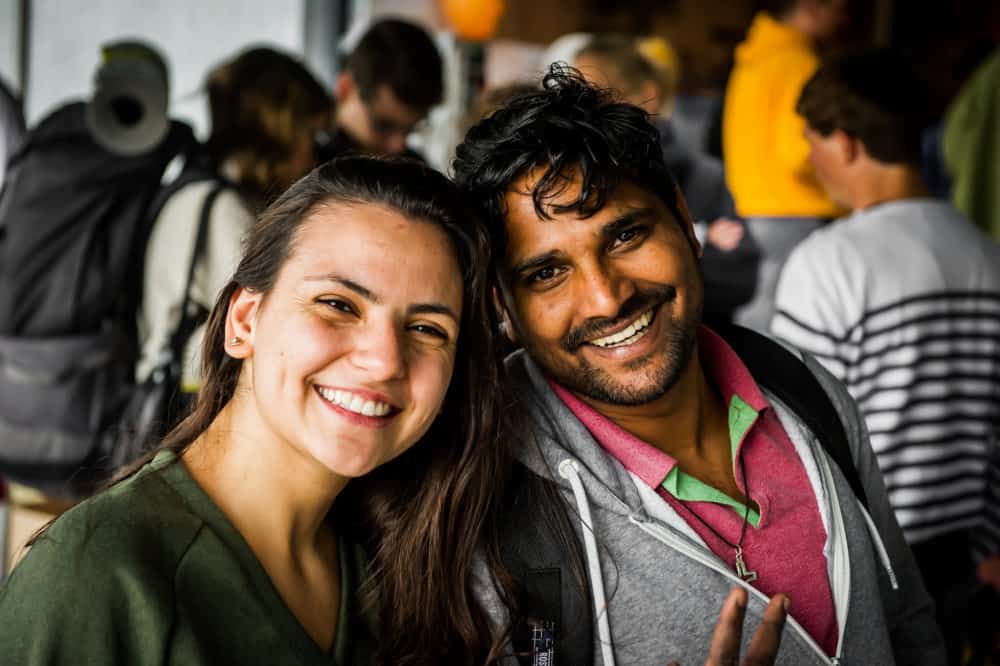Happy World Friendship Day!
Wait, “World Friendship Day”? It sounds like an elaborate ploy by Hallmark to sell more cards or like one of those “holidays” created by Facebook fiat.
And, while both thoughts are somewhat accurate, this holiday is far more meaningful than any greeting card.
As we seem to read each day about yet another horrific event, building friendships, particularly across differences that can otherwise divide us, is exactly what we need.
***
According to Wikipedia, Friendship Day was first initiated by Joyce Hall, founder of Hallmark Cards. Hall chose August 2 in that it was the midpoint of the biggest lull between holidays.
It gets worse. Facebook now informs you every February 4 that it is “Friends Day.” Why February 4? That’s the date Facebook was launched back in 2004. Gag me with a spoon. I’m sorry, Facebook, but you don’t get to own friendship!
The United Nations, however, has recognized July 30 as the International Day of Friendship. This holiday traces its roots not to Hallmark or Facebook but to a group of friends in Paraguay in the 1950s. They wanted to cultivate friendship among people as a way of promoting peace.
And Lord knows our world could use more peace and friendship, particularly with people who are different than we are.
***
I am currently at World Youth Day and have been privileged to witness bonds of friendship form across all sorts of lines that otherwise divide people. I’ve seen, for example, a group from Mexico, Singapore, and Lithuania — honestly, can you think of three more different countries? — go on a pilgrimage together and come back best friends.
So, how do we actually cultivate friendships with people who are from other parts of the world?
In listening to pilgrims, I have distilled eight factors that help foster international friendships, none of which requires flying halfway around the world:
1) Time — but not necessarily much time
We all have fears and prejudices that can initially get in the way of forming friends with people from other places. One young woman from Korea who came to Poland shared how she feared she would not be welcomed by Europeans. But then she was accepted and quickly became friends with the very people she thought might not welcome her.
There’s a need to break the ice — as any veteran of retreats would know — but many of those I have met in Poland expressed feeling closer to others after two days than people they have known for two years or more.
2) Doing things together
I’m not going to go up to a complete stranger and say, “Hi, I’m Michael. Tell me about your most difficult experience of loss.” Yet, if we are doing something together, whether it’s hiking, or playing with kids, or building a house, then spontaneous conversations develop. It might start with sports or the weather but can soon get to a deeper level.
One young woman from Malta who volunteered last week at a Polish nursing home explained how it was in playing games with the elderly that they all seemed to be the same, despite being decades apart in age and not being able to speak the same language.
3) Shared space and discomfort (AKA the freshman dorm theory of friendship)
During my freshman year of college, I lived in a closet-sized, AC-less room with two other dudes. It was “cozy,” but I am deeply convinced that the uncomfortable, shared space brought us together.
I got to witness this again last week. One group of young people took a sailing pilgrimage whereby eight people spent each day together on an eight-meter boat. They slept, worked, ate, prayed, and became close friends in that little space.
4) A manageable group size
The experiences I have been describing were part of MAGIS 2016, a program for about 2,000 young adults from all over the world before World Youth Day. After several days together as a large group, they spent nearly one week in groups of about 20 participants. In addition to living, praying, and reflecting together, each group also participated in different activities, ranging from walking pilgrimages to song and dance performances.
While people have great things to say about the time when they were together as 2,000 and about their time in Krakow with the roughly 2,000,000 pilgrims gathered for World Youth Day, by far the most significant relationships developed during that week when they were divided into groups of 20. When the group is massive in size, we tend to stick with people we already know. When the group is smaller, people feel more comfortable making new friends.
5) Music and dance
Nothing breaks down barriers like music and dance. Hannah Bendiksen, a student at the University of Santa Clara who spent last week in a group with people from Spain, Poland, and the US, explained, “Dance has become our shared language so much more than I expected. When a dance move is difficult, I find myself making eye contact across the room, exchanging nods of sympathy or giggles at the awkward first attempt.” After looking a little ridiculous in learning a new dance, suddenly talking with someone from another culture does not seem like such a big deal.
God + music + shared vulnerability = new friendships pic.twitter.com/huKW4dXWsQ
— TJP On Tour (@TJPOnTour) July 29, 2016
6) Shared vulnerability
Nadine Guyo, a student at Seattle University, references the “Magis Circle” in the above video, a group reflection whereby participants share how their day has been, where God has been active, and what has touched them from what others have said.
It’s not something that most of us do on a daily basis, but few activities can bring different people so close together as spaces for shared vulnerability.
7) Nonverbal communication
Since being in Poland, I have been struck by how bonds of friendship have formed even when people do not speak the same language. Emily Kesler, a student at Marquette, noted, “Although we are only able to share translations, short phrases and smiles and expressions, I feel most connected to a woman from halfway around the world who speaks a completely different language than I.”
8) The same faith
Jesuits often talk about being “friends in the Lord” (even if we can oftentimes do better about making time for one another). Shared faith is the element that unites people from such different places together at World Youth Day. Even if we pray in different languages, the same beliefs and practices can be a unifying base on which friendships develop.
***
After the recent murder of the elderly Fr. Jacques Hamel in France, the Archbishop of Rouen, Dominique Lebrun, said, “The only weapons the Catholic Church can take up are those of prayer and brotherhood.” He called on young people “to become apostles of the civilization of love.”
We can start building that civilization by putting ourselves in situations where we are more likely to cultivate friendships with people from different parts of the globe.
So go. Be uncomfortable. Dance. And, through friendship, make this world a little more peaceful.


